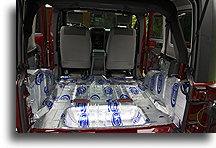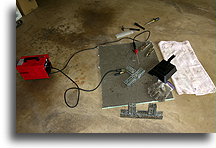

Specifications
Why Jeep Wrangler?
Why did I choose Jeep Wrangler as the expedition vehicle? It is true that Jeep Wrangler is not designed for overlanding, but it is a good platform to start your own modifications. The vehicle is well built; it is not bad as daily driver and provides good comfort on long distances. It is important that Wrangler has thousands of accessories enabling even the most difficult changes. Finally, Jeep Wrangler is a vehicle with a great off-road tradition, many decades of history and of course, the real 4x4 charm.
Jeep Wrangler JK is a robust vehicle and intentionally spartan. As such, it is open to any modifications according to owner's individual needs. My main goal was to build the reliable expedition vehicle while avoiding excessive and unnecessarily changes and expansions. I prefer easy handling vehicle, not overloaded giant monster. Main factors here are safety, vehicle protection, recovery, and storage; all that together with comfort necessary on long journeys. I decided not to install a roof rack. This is mainly because the equipment carried high above raises the vehicle's center of gravity, which in turn makes riding off-road more difficult. Gas jerry cans and spare wheel on the roof look cool, but it is not convenient and safe location. Instead, I focus on keeping the inside storage area well organized and an auxiliary fuel tank under the floor is much more practical. Going bigger is not my goal either. Suspension is in factory height, and tires 32-inches in diameter are the most practical. They do not rub while turning and provide enough clearance for challenging terrain.

I develop my three person overland vehicle called Balios based on the simplest version of Jeep Wrangler JK. I do all the work myself. I want to keep things simple and I do not want to waste my time on modifications purely for show. Any alteration I make has to have the value for the long-distance overland expeditions.
My Principles of Building an Overland Vehicle:
- Keep the vehicle's center of gravity low
- Do not drill holes in the car body
- Do not store anything outside the cabin
- Do not make any changes purely for show


The full list of changes and exact description of the improvements can be found on preparations pages.




